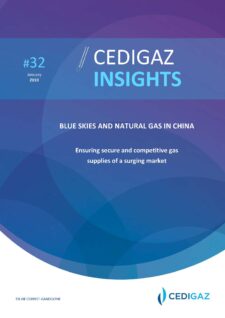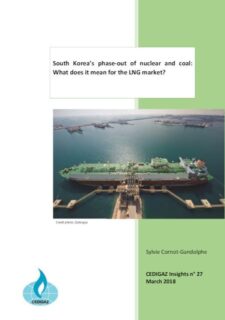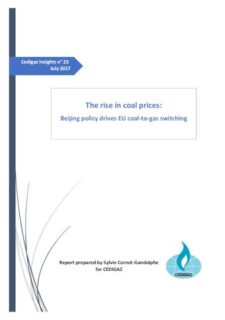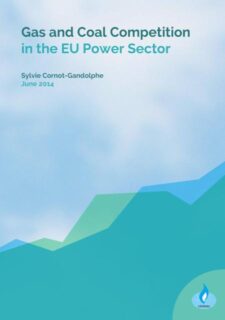Gas-Coal Competition

BLUE SKIES AND NATURAL GAS IN CHINA
Cedigaz Insights N° 32 January 2019 101 pages PDF format
The Chinese gas market has entered a new phase of growth driven by favourable policies. A complete report on the Chinese booming gas market, this CEDIGAZ Insight special issue covers demand, production (including Shale gas and other unconventional gas productions), imports from pipelines and LNG, Chinese energy policies, infrastructure development, medium and long-term Outlook and more.

South Korea's phase-out of nuclear and coal: what does it mean for the LNG market?
Cedigaz Insights N° 27 March 2018 43 pages PDF format
| Member | FREE | Login |
| Non Member | 1000 € |
Shortly after his inauguration in May 2017, the new President of South Korea has unveiled a new energy policy that shifts away from nuclear and coal power and focuses on renewables and natural gas instead. The move responds to growing safety concerns over nuclear power following the 2011 Fukushima accident and a series of earthquakes that hit southern Korea in 2016 and 2017. The energy transformation also responds to rising public hostility to coal power due to worsening air quality. Coal burning is also the main source of greenhouse gas emissions in the country, which has committed to reduce its emissions by 37% by 2030.

The rise in coal prices: Beijing policy drives EU coal-to-gas switching
Cedigaz Insights N° 23 July 2017 23 pages PDF format
Despite a decline in global coal demand for the second consecutive year, international steam coal prices doubled in 2016. This massive rise may seem paradoxical; in fact, it responded to market fundamentals: a tightening of the international market due to an unexpected surge in Chinese coal imports and the inability of exporters to meet this sudden increase. The surge in Chinese imports was not due to increasing demand – Chinese coal consumption in 2016 fell for the third year in a row– but to domestic production restrictions mandated by the Chinese government from April 2016. To remove excessive and outdated capacities in the domestic coal sector, that weighed on domestic coal prices, the government required coal mining companies to cut operating days from 330 to 276 a year. The new regulation led to a fall in coal production, shortages of coal and a steep increase in domestic coal prices, forcing power utilities to turn to the international market. However, after five years of low prices and reductions in investment, exporters were not able to respond to this sudden demand and international prices increased to clear the market.

Gas and Coal Competition in the EU Power Sector
Thematic studies June 2014 213 pages PDF format
Despite its many assets, a confluence of factors – including flat electricity demand, rising use of renewable energy sources, falling wholesale electricity market prices, high gas prices relative to coal and low CO2 prices – has eroded the competitiveness of natural gas in the EU power sector. The share of natural gas in the EU electricity mix has decreased from 23% in 2010 to 20.5% in 2012. By contrast, coal-fired power stations have been operating at high loads, increasing coal demand by the sector. This thorough analysis by CEDIGAZ of gas, coal and CO2 dynamics in the context of rising renewables is indispensable to understand what is at stake in the EU power sector and how it will affect future European gas demand.



